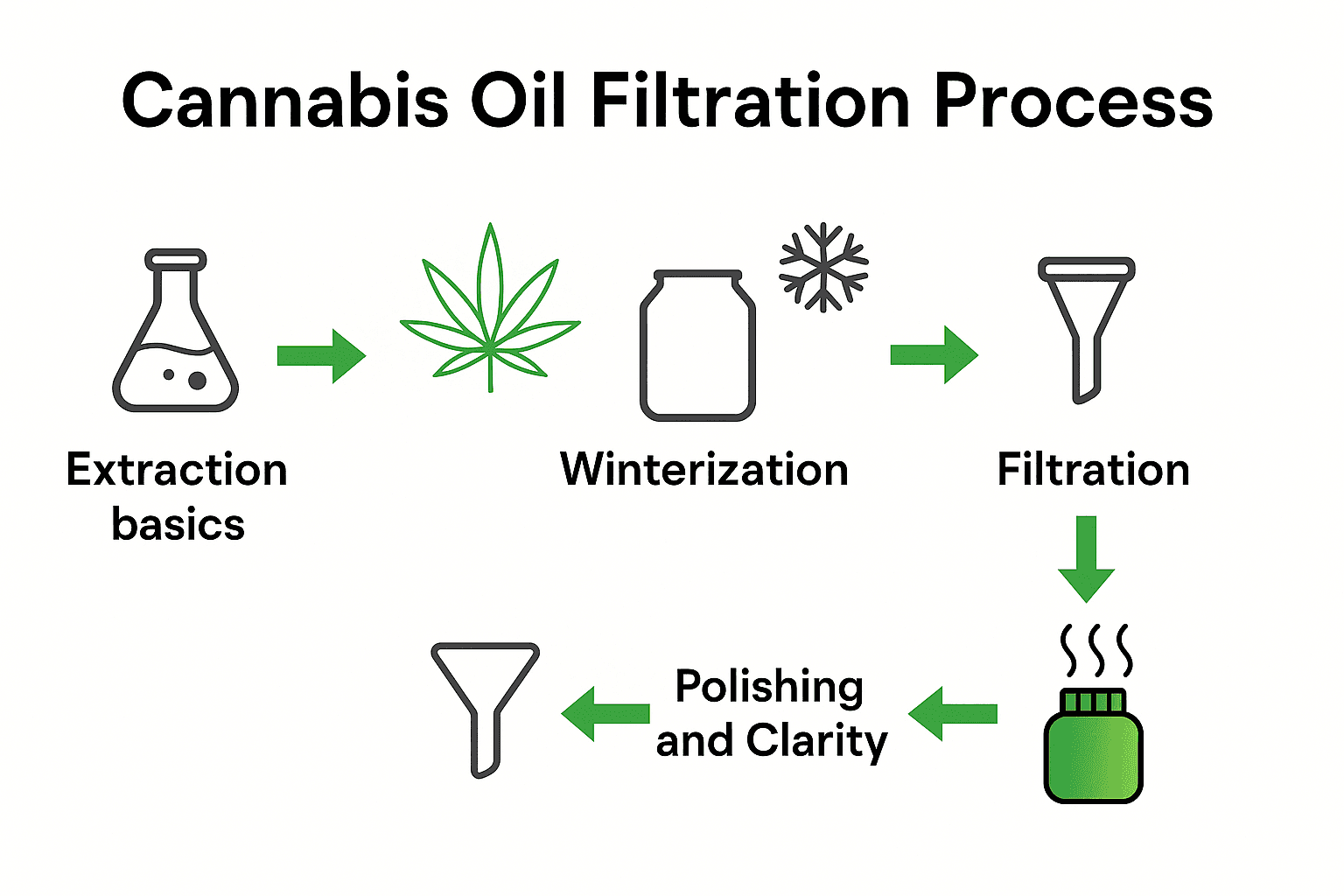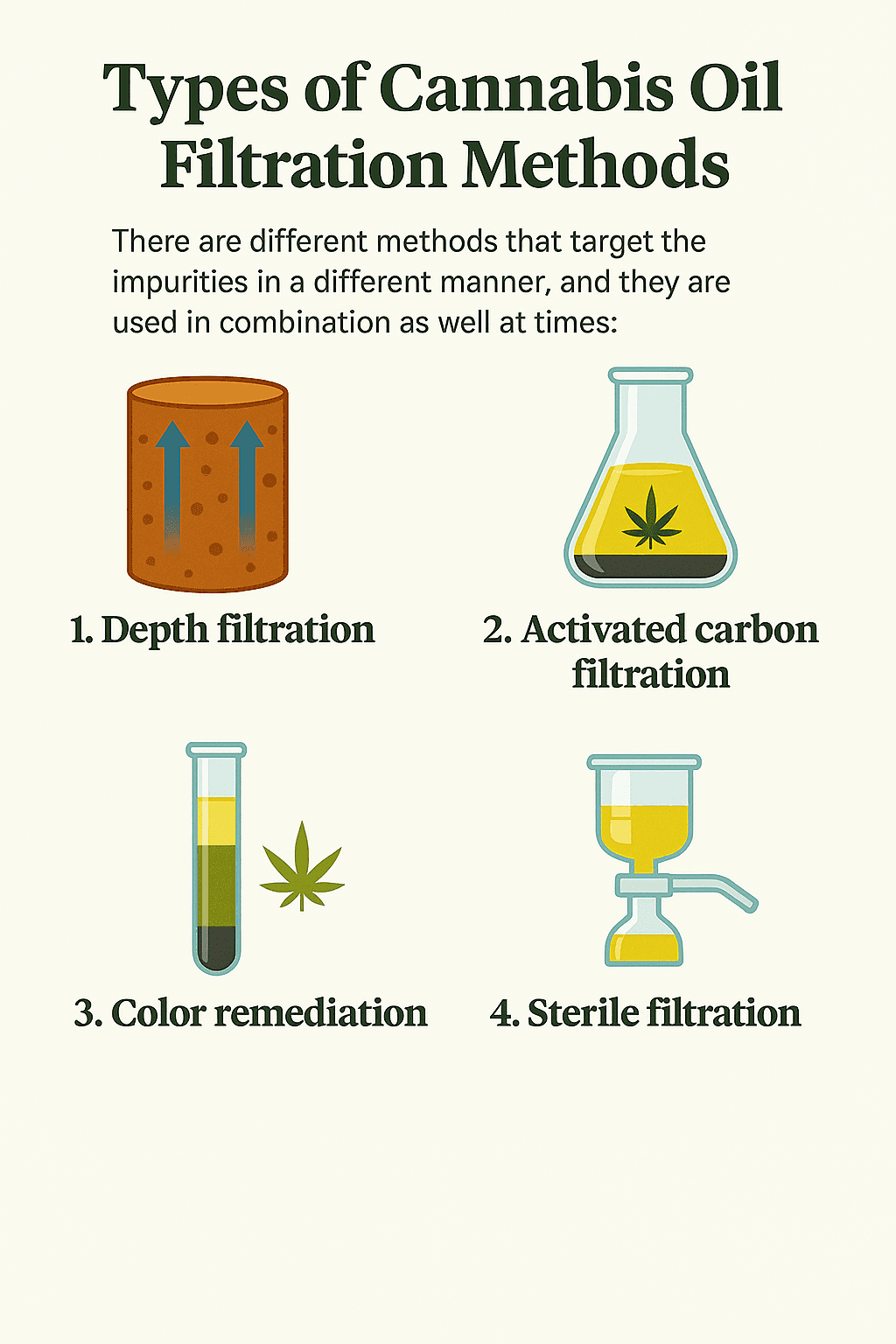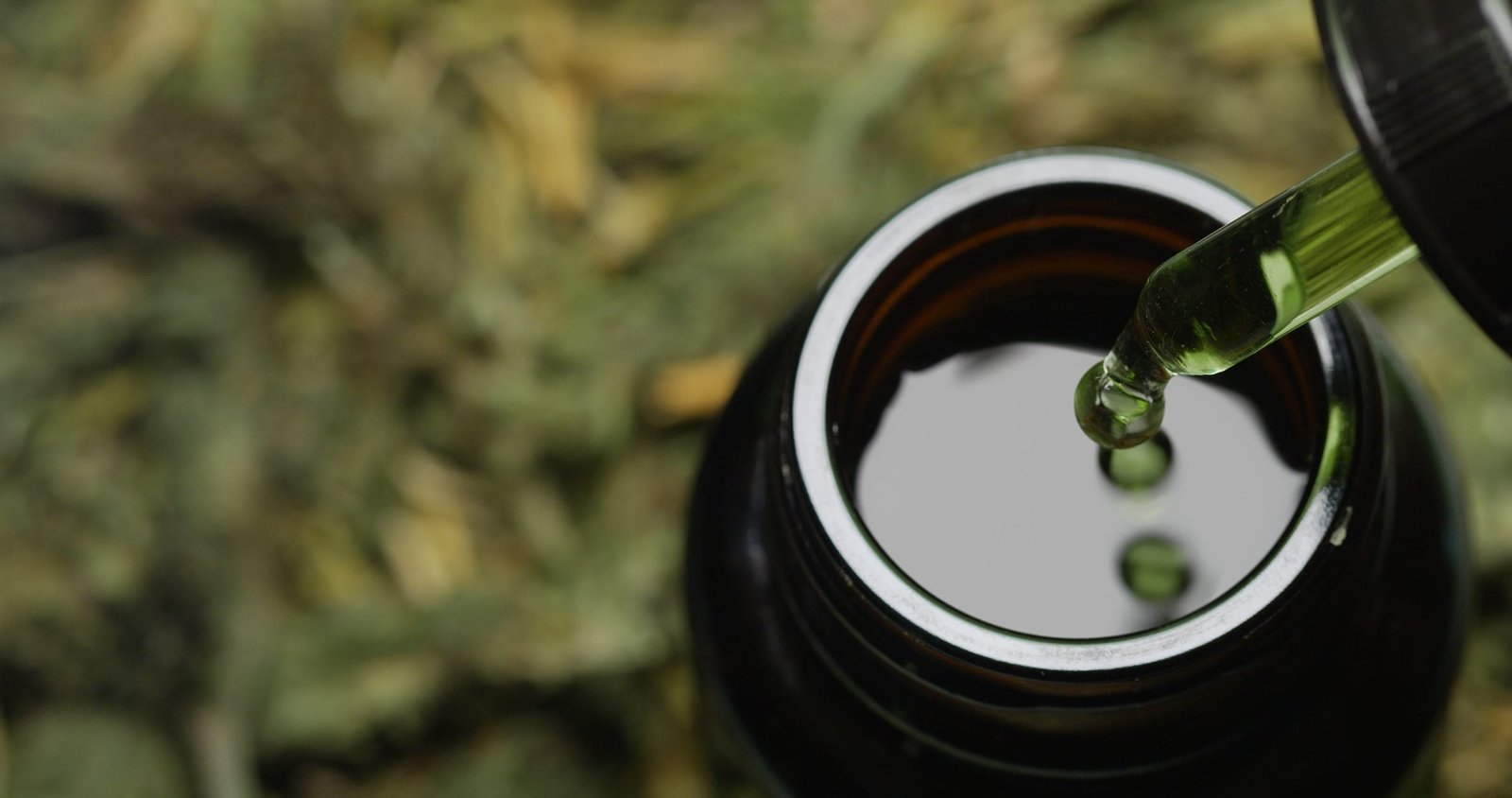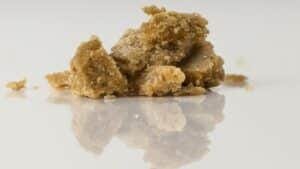In this rapidly evolving cannabis industry, now the focus has moved from simple extraction to refined, quality concentrates that meet user as well as regulatory standards. The process from raw plant material to golden oil is a complex one and a crucial step is the process of filtration. Generally overlooked, filtration is the deciding factor which separates raw extracts from safe, marketable products. Here we will look into the intricacies of the cannabis oil filtration process and its importance.
Sections
ToggleWhat Is Cannabis Oil Filtration?

It is the post extraction, purification process that removes any unwanted impurities from the crude extract. All these impurities include waxes, fats, chlorophyll and other materials derived from the plants. Through passing the oil via filter media, the producers can enhance the flavor, potency and clarity of the extract to a great extent and have a refined end product.
Cannabis Oil Filtration Process

The process of cannabis oil filtration is a multi phase endeavor that includes:
Step 1-Extraction basics
The first step begins with extraction, when a solvent like CO2 or ethanol strips the terpenes and cannabinoids from plant matter. This early pull collects undesirable compounds, leading to a dark, crude oil that is not consumer ready at this step.
Step 2- Winterization
This step includes dissolving crude oil in ethanol and then freezing it. The highly cold temperature causes waxes, fats and lipids to solidify, thus making it simple to remove them in the filtration stage that follows.
Step 3- Filtration
Then the winterized mixture is passed through filter media and is the main removal stage. This is where the solidified compounds are trapped physically by the filter and separated from the desirable cannabinoid rich mixture.
Step 4- Polishing and Clarity
After the impurities are removed, then the oil undergoes the polishing step. This is the filtration that targets the remaining microscopic elements to achieve stability and purity before the solvent is cleansed to make the final concentrate.
Why Filtration Matters: Purity & Quality
The process of filtration is not an optional step, it is crucial to the core attributes of the product:
1. Purity – Filtration removes the contaminants such as plant pigments, waxes and fats that may cause lung problems when inhaled and also leads to unpleasant, harsh experiences.
2. Quality – When the impurities are eliminated, the actual flavor profile as well as effects of the strain shines through. This leads to a more flavorful and smoother product that the users can trust.
3. Consumer Trust – In a competitive market, purity and quality are non-negotiable. Filtration supports brand reputation by ensuring products are safe and reliable.
Types of Cannabis Oil Filtration Methods

There are different methods that target the impurities in a different manner, and they are used in combination as well at times:
1. Depth filtration: This uses a porous, thick media to trap the particles through the matrix, perfect for removal of large particulates after the winterization process.
2. Activated carbon filtration: This is very effective in adsorbing the chlorophyll and pigments, thus improving the color and taste of the oil as it removes the residual plant flavors if any.
3. Color remediation: This is the technique that uses a column of media to strip color and impurities and is often controversial when used to mask the low quality material.
4. Sterile filtration: This is the final filtration micron level that removes microbial life and ensures that the product is safe for use, especially for oils that are there for ingestion.
Factors That Influence Filtration Outcomes
The choice for filtration involves various key factors like:
- Yield: In case of aggressive filtration, there can be some impurities along with desirable compounds, thus reducing the overall saleable oil volume.
- Potency: Some methods can be controlled to avoid any accidental stripping out terpenes and cannabinoids, reducing the potency and entourage effect of the product.
- Cost: Doing multi stage filtration using high quality media further adds to material and equipment cost that must be justified by higher market value of the purified product.
Key Challenges in Cannabis Oil Filtration
There are a lot of challenges that the producers should navigate to make their filtration process perfect. These challenges include:
1. Yield vs. clarity
Finding a balance between removing impurities and preserving valuable oil is a constant challenge.
2. Cannabinoid loss
Using any incorrect media or undergoing over-filtration can adsorb as well as remove the terpenes and cannabinoids that the process is to protect, thus further degrading the product.
3. Compliance
The filtration processes and media should be approved for use by the local regulatory bodies to further ensure that the product you get is legal and safe to be used by the consumers.
4. Choosing media
Choosing the wrong grade of type of filter media can result in inefficient purification, clogging and even having foreign particles in the oil.
Best Practices for High-Quality Cannabis Oil Filtration
Adhering to the steps and practices can ensure that you get a high quality, consistent output.
- Start with clean extraction– It is observed that the cleaner the initial extract is, less aggressive filtration needs to be done. The high quality initial biomass is the most important filter needed.
- Using the right media– Choose the filter media that is designed for cannabis oils and impurities that you wish to target. Always ensure that it is food grade.
- Monitor consistency– Always test the oil both pre and post filtration to check for terpene profile, potency as well as contamination levels and to further ensure that the process is consistent and efficient.
- Scale smartly– You need to understand that the process which works in a lab setting may not help in large volume production directly. You need to pilot any new method very carefully before you scale up.
Conclusion
The process of cannabis oil filtration is a sophistical and crucial step elevating the crude extract into a premium product. It is in fact a fundamental step for safety, purity and quality that directly impacts customer satisfaction and brand reputation. Through understanding the different challenges, methods and best practices of cannabis oil filtration, the producers can easily master this process and ensure that they deliver a potent, premium quality and pure concentrate in the market.




